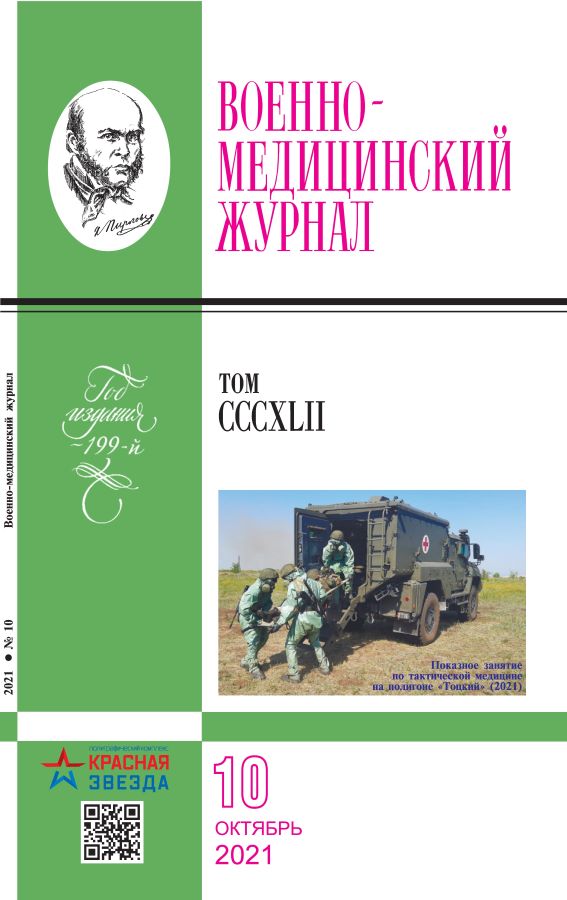Regression of allodynia in patients with diabetic distal polyneuropathy against the background of the use of high-frequency and low-frequency transcutaneous electroneurostimulation
- Authors: Belyakin S.A.1, Al-Zamil M.K.2,3, Vasileva E.S.2, Ivolgin A.F.1
-
Affiliations:
- The A.A.Vishnevsky 3rd Central Military Clinical Hospital of the Ministry of Defense of the Russian Federation
- «Peoples’ FriendshipUniversity of Russia»
- Medical center «Olivia»
- Issue: Vol 342, No 10 (2021)
- Pages: 66-69
- Section: Brief articles
- URL: https://journals.eco-vector.com/0026-9050/article/view/628785
- ID: 628785
Cite item
Abstract
The effect of transcutaneous electroneurostimulation on allodynia in patients with severe neuropathic pain syndrome developed against the background of diabetic distal polyneuropathy of the lower extremities was studied. The use of transcutaneous electroneurostimulation enhances in 1.3 times the therapeutic effect of pharmacotherapy in the treatment of neuropathic pain in patients with diabetic distal polyneuropathy of the lower extremities. High-frequency transcutaneous electroneurostimulation is more effective than low-frequency transcutaneous electroneurostimulation in the treatment of allodynia by 18.2% immediately after treatment and by 40% at the end of the 2nd month of the long-term period. By the 6th month of the long-term period, the results of treatment in both groups did not differ significantly.
About the authors
S. A. Belyakin
The A.A.Vishnevsky 3rd Central Military Clinical Hospital of the Ministry of Defense of the Russian Federation
Author for correspondence.
Email: e_vasilieva@inbox.ru
Russian Federation, Krasnogorsk, Moscow Region
M. Kh. Al-Zamil
«Peoples’ FriendshipUniversity of Russia»; Medical center «Olivia»
Email: e_vasilieva@inbox.ru
Russian Federation, Moscow; Podolsk, Moscow region
E. S. Vasileva
«Peoples’ FriendshipUniversity of Russia»
Email: e_vasilieva@inbox.ru
Russian Federation, Moscow
A. F. Ivolgin
The A.A.Vishnevsky 3rd Central Military Clinical Hospital of the Ministry of Defense of the Russian Federation
Email: e_vasilieva@inbox.ru
Russian Federation, Krasnogorsk, Moscow Region
References
- Кукушкин М.Л. Хроническая боль // Неврология, нейропсихиатрия и психосоматика. – 2010. – № 3. – С. 80–86.
- Рудницкий А.Б., Авсейцева Т.Ю., Иволгин А.Ф. и др. Опыт лечения компрессионноишемической миелопатии // Госпитальная медицина: наука и практика. – 2020. – № 3. – С. 15–20.
- Andrew J. Todd. Neuronal circuitry for pain processing in the dorsal horn // Nat. Rev. Neurosci. – 2010. – Vol. 11, N 12. – P. 823–836.
- Jardin K., Gregersen L., Rosland T. Assessment of pain response in capsaicin-induced dynamic mechanical allodynia using a novel and fully automated brushing device // Pain. Res. Manag. – 2013. – Vol. 18, N 1. – P. 6–10.
- Jensen T.S., Finnerup N.B. Allodynia and hyperalgesia in neuropathic pain: clinical manifestations and mechanisms // Lancet Neurol. – 2014. – Vol. 13, Is. 9. – P. 924–935.
- Somers D.L., Clemente F.R. Contralateral high or a combination of high- and low-frequency transcutaneous electrical nerve stimulation reduces mechanical allodynia and alters dorsal horn neurotransmitter content in neuropathic rats // J. Pain. – 2009. – Vol. 10, Is. 2. – P. 221–229.
- Truini A., Garcia-Larrea L., Cruccu G. Reappraising neuropathic pain in humans-how symptoms help disclose mechanisms // Nat. Rev. Neurol. – 2013. – Vol. 9, N 10. – P. 572–582.
Supplementary files







